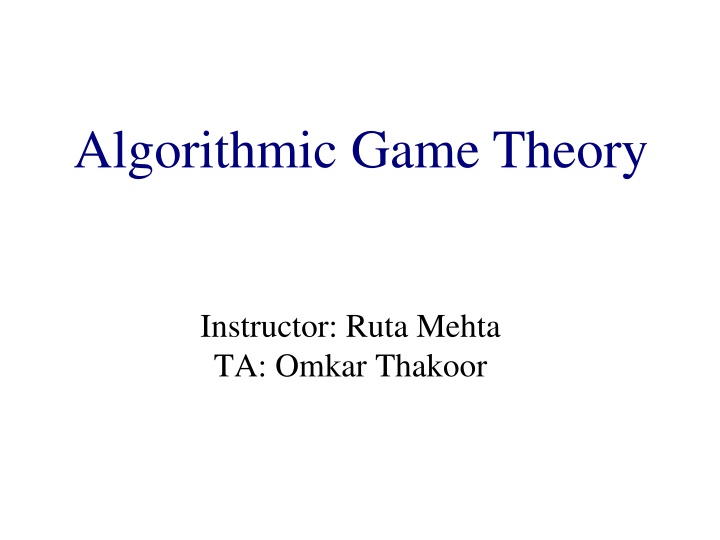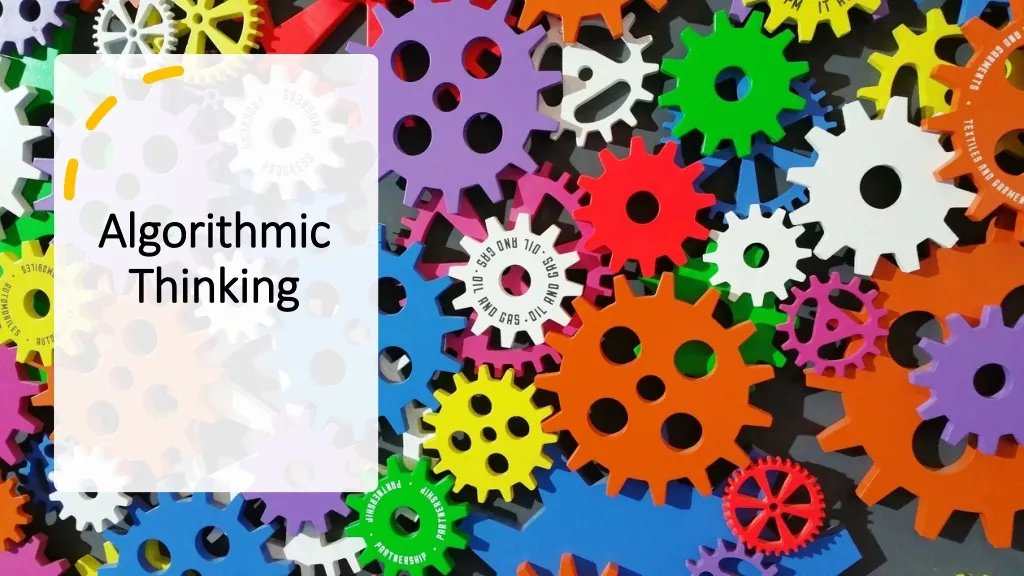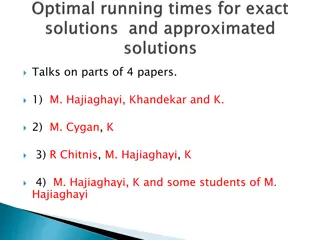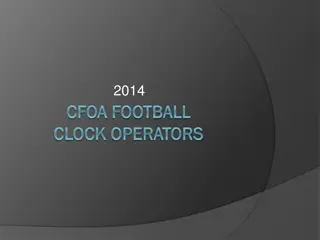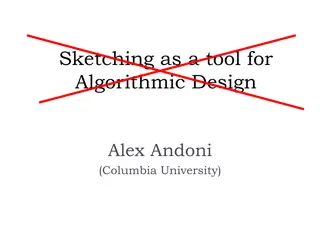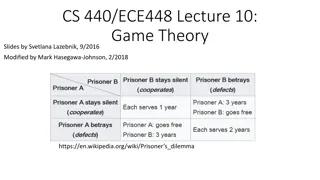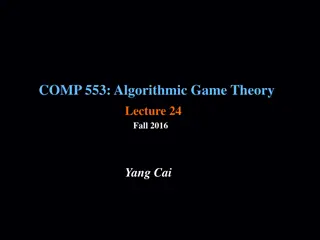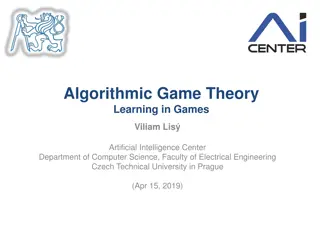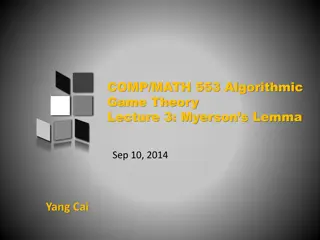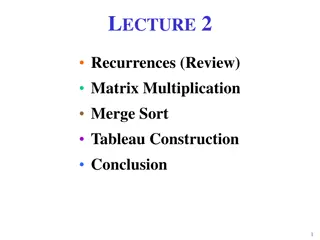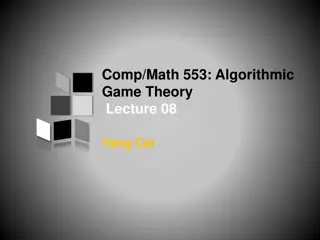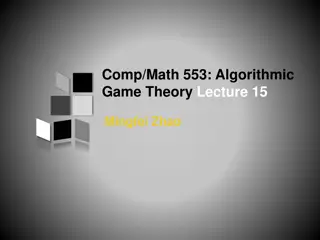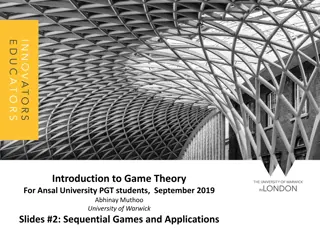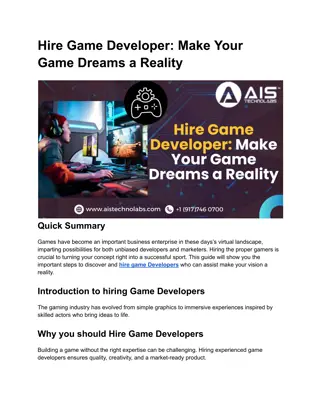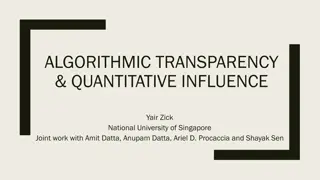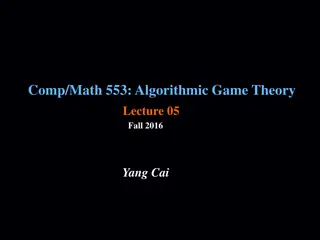Algorithmic Game Theory
Multiple self-interested agents interact in the same environment, exploring outcomes and equilibria in Algorithmic Game Theory. Research-oriented course focusing on key concepts, proof techniques, and efficient algorithms. Graded based on homework, final exam, project work, presentation, report, and class participation. Resources include books, recent papers, and lecture notes. Office hours available for assistance.
Download Presentation

Please find below an Image/Link to download the presentation.
The content on the website is provided AS IS for your information and personal use only. It may not be sold, licensed, or shared on other websites without obtaining consent from the author.If you encounter any issues during the download, it is possible that the publisher has removed the file from their server.
You are allowed to download the files provided on this website for personal or commercial use, subject to the condition that they are used lawfully. All files are the property of their respective owners.
The content on the website is provided AS IS for your information and personal use only. It may not be sold, licensed, or shared on other websites without obtaining consent from the author.
E N D
Presentation Transcript
Algorithmic Game Theory Instructor: Ruta Mehta TA: Omkar Thakoor
Multiple self-interested agents interacting in the same environment Deciding what to do. Q:What to expect? How good is it? Can it be controlled?
Chicken (Traffic Light) C S S C C S C S
Algorithmic Game Theory AGT, in addition, focuses on designing efficient algorithms to compute solutions necessary to make accurate prediction.
What to expect Research-oriented Course Exposure to key concepts and proof techniques from AGT Explore research problems and introduce novel questions What is expected from you Energetic participation in class Research/Survey Project (in groups of two).
Instructor: Ruta Mehta (Me) TA: Omkar Thakoor Office hours: Ruta: Fri 1-2pm Omkar: Mon 3-4pm
Grading: 4 to 5 homeworks, one every two weeks 25% Final exam 30% Research/Survey Project 40% Work 20% Presentation 10% Report 10% Class participation 5%
References T. Roughgarden, Twenty Lectures on Algorithmic Game Theory, 2016. N. Nisan, T. Roughgarden, E. Tardos, and V. Vazirani (editors), Algorithmic Game Theory, 2007. (Book available online for free.) M. Osborne and A. Rubinstein, A Course in Game Theory, 1994. R. Myerson, Game Theory: Analysis of conflict, 1991. Recent papers, and lecture notes from other similar course
Useful links Webpage: https://courses.engr.illinois.edu/cs598rm/ Piazza Page: piazza.com/illinois/spring2017/cs598rm
Goal #1 Understand outcomes arising from interaction of smart and self-interested agents. Games and Equilibria
Prisoners Dilemma Two thieves caught for burglary. Two options: {confess, not confess} N C N -1 -1 -6 0 C 0 -6 -5 -5
Prisoners Dilemma Two thieves caught for burglary. Two options: {confess, not confess} N C N -1 -1 -6 0 C 0 -6 -5 -5 Only stable state
Rock-Paper-Scissors R P S R 0 0 1 -1 -1 1 0 0 P 1 -1 -1 1 S 0 0 -1 1 1 -1 No pure stable state! Both playing (1/3,1/3,1/3) is the only stable state. Why?
Normal form games and Nash equilibrium existence Computation: minmax theorem, Lemke-Howson algorithm Complexity: PPAD-complete Other equilibrium notions markets, security games Incomplete information, Bayesian Nash Collusion, Core, Nash bargaining
Goal #2 Analyze quality of the outcome arising from strategic interaction, i.e. OPT vs NE. Price of Anarchy
Braess Paradox 60 commuters 30 1 hour ? minutes s t 1 hour ? minutes 30 Commute time: 1.5 hours
Braess Paradox 60 commuters 30 1 hour ? minutes s t 0 hours ~1 hour 1 hour ? minutes 30 Commute time: 1.5 hours
Braess Paradox 60 commuters 1 hour ? minutes 60 s t 0 hours 1 hour ? minutes Commute time: 2 hours
Braess Paradox 60 commuters 1 hour ? minutes 60 s t 0 hours 1 hour ? minutes Price of Anarchy (PoA): ????? ?? ?.?=? ? = ??? ? Can not be worse!
Network routing games Congestion (potential) games PoA in linear congestion games Smoothness framework
Goal #3 Designing rules to ensure good outcome under strategic interaction among selfish agents. Mechanism Design
At the core of large industries Search auction primary revenue for google! Spectrum auction distribution of public good. enables variety of mobile/cable services. Kidney exchange critical decision making
At the core of large industries Online markets eBay, Uber/Lyft, TaskRabbit Voting, review, coupon systems. So on
MD without money Arrow s theorem (voting), stable matching, fair division MD with money First price auction, second price auction, VCG Generalized second price auction for search (Google) Optimal auctions: Myerson auction and extensions
Fun Fact! Olympic 2012 Scandal Check out Women s doubles badminton tournament Video of the fist controversial match
Food for Thought You and your friend choose a number 2 3 100 97 98 99
Food for Thought You and your friend choose a number 2 3 96 100 98 97 99 +2 -2 What if +/- 50? What will you choose? What are Nash equilibria?
